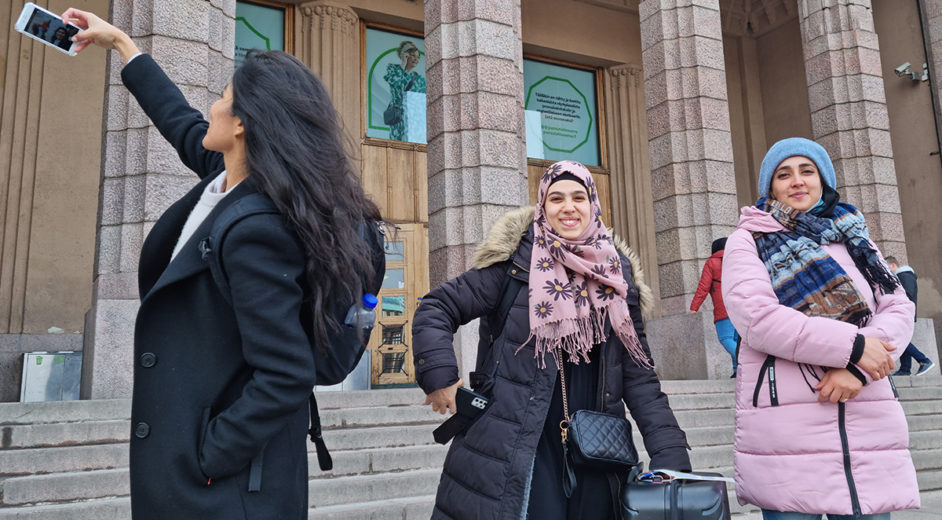How is the Nordic culture and environment a part of my identity?
Along with their bilingual adult students, four educational institutions from four different Nordic countries have been working hard to develop new shared teaching material about identity. Understanding each other is a constant struggle, but the students and teachers love the project.
By Joan Rask, journalist
What kind of identity can you create in a Nordic country if you were born and raised somewhere outside the Nordic countries? That is the question four educational institutions have set out to answer as part of the Nordplus project "My Nordic Identity". HF & VUC Roskilde in Denmark is the coordinating institution, and for teacher Annette Rydahl, the project has become very close to her heart.
“This project has brought so much joy to a group of people who are not usually invited to participate in a lot of things … and their commitment has left a big impression on me. When we were in Helsinki, one of the students said: Thank you for today – it has been the best day in my life,” she says.
The group of students is very varied, both in terms of age as well as their level of education, schooling and language skills. Common to them all, however, is that they are adults, or almost adults, that they are currently learning either Finnish, Swedish, Norwegian or Danish, and that they all live in either Finland, Sweden, Norway or Denmark.
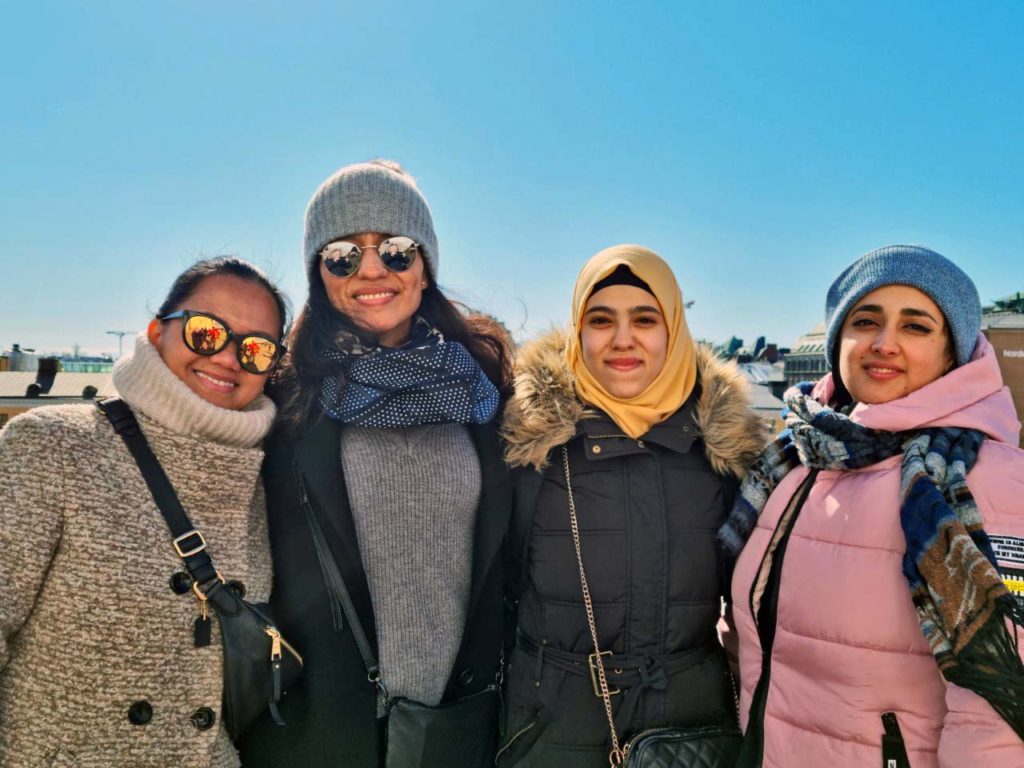
The primary goal of the project is to create a new set of teaching materials for language teachers who teach one of the Nordic languages to adults as a second language, but another goal is that all four nations participate in the creation of the material.
“Ethically, the project is great. The students are the ones “doing” the project. They are, quite literally, the material … They participate in the classes and they complete the assignments, such as recording a video from their favourite spot in their local area or creating a collage of their everyday lives,” says Annette Rydahl.
Annette Rydahl created the project together with her colleague Lis Eilertzen on behalf of HF & VUC Roskilde. She admits that their ambitions are sky-high.
“We’re not afraid to look at this philosophically! How does it feel to construct your own identity in a Nordic context, and what kind of identity is it possible to create if you arrive in a Nordic country as an immigrant, a refugee or something completely different?” she asks.
Language is the key – and the obstacle
How do you communicate something to a group that consists of people who only speak one of the Nordic languages and some of them only at a basic level? Do it in English would be the obvious answer, but a lot of the students do not understand that language.
“In the beginning we were very ambitious and thought we just had to translate everything, so that all the material was available in English and the four local languages. English is necessary for the Finnish students and it is also the language that we as teachers speak to each other in. The challenge is, however, that some of my own students do not even speak Danish at a basic level yet,” Annette Rydahl says.
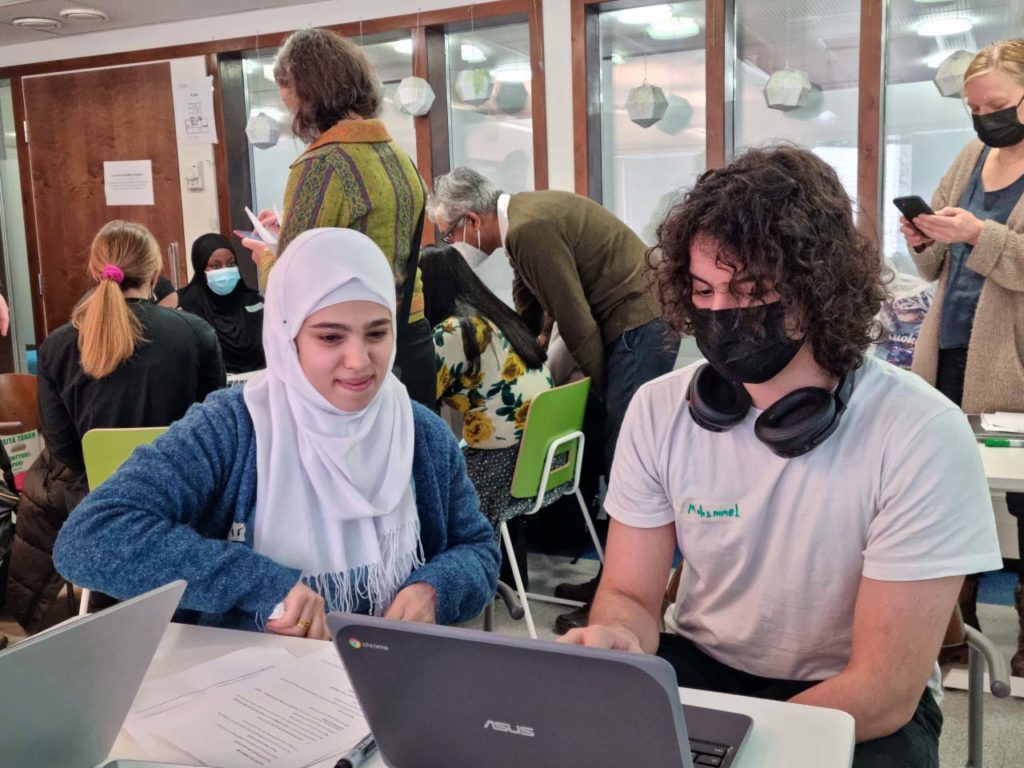
Because of the pandemic, the first seminar was 100% virtual and was organised by HF & VUC Roskilde. To make it as easy to understand as possible in an already strained virtual context, only two nationalities participated in parts of the group assignments.
“Experiencing the energy during the group work was just amazing! When the Swedish and Danish students were together they started laughing because, all of a sudden, they could understand each other. Then the Swedish participants told the people translating: You don’t have to do that – we can understand the Danes,” she explains.
Evelyn Höglund is a teacher at the Center for Adult Learning, Swedish for immigrants in Kramfors municipality, Sweden. She represents the Swedish partner, the smallest of the four partner institutions in the project. To Evelyn Höglund, the international aspect really matters.
“Travelling internationally is an ancient activity that people have done through the ages … and when you live in a small town like Kramfors, it is important to experience other environments,” she says.
She explains that it has been rewarding to see how, during the international visits, the wildly different students, who vary so much in nationality, religion and cultural background, have often become friends and taken care of each other across the Nordic countries they represent.
“Sometimes they do not even have a common language, but there is a shared feeling of solidarity and a sense that “we’re all in this together”. It has been so lovely to see how the young students take care of the older ones – they’ve kind of adopted them,” she says.
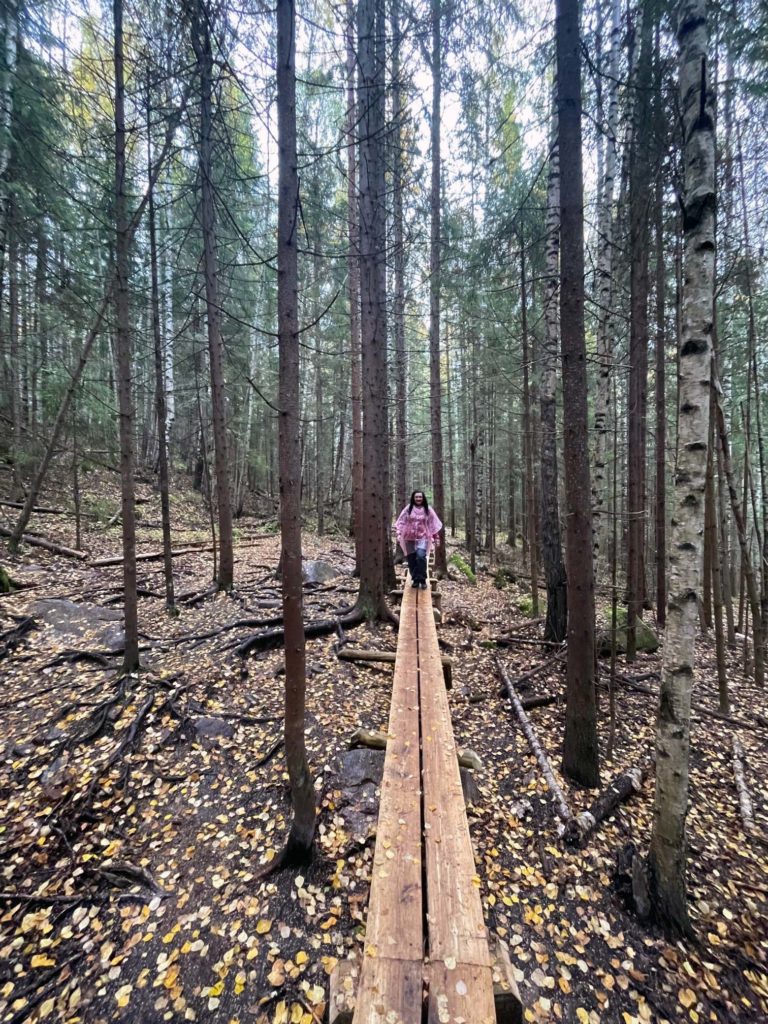
Covid-19 has opened new doors
The project had barely begun before the whole world shut down in 2020 due to Covid-19, and this sent the organisers and initiators into overdrive. It was not all bad though. In Finland, it meant that Hugh Fitzpatrick, vice principal at Eira High School for Adults, had to reorganise things – both physically and online.
“Covid-19 was a double-edged sword and it was difficult, but the good thing was that a lot more students had the opportunity to participate, because the first large meeting with all the students and teachers in the project was held online. We had 60 students participating, instead of only the few who would normally have travelled to attend,” he says.
One of the overarching goals of the project is to get the students actively involved.
”By that measure, I think the seminars have been a success. This spring everyone was physically together in Helsinki, and the theme was about their participating in society. How do they engage not only in the school, but also outside? We asked them; How much did they do with people who were like themselves and how much did they do with people who were a bit different from themselves?” Hugh Fitzpatrick explains.
He has no doubt that the two main goals of the project have influenced the three seminars that have been held.
“Instead of someone telling the students what Nordic identity is, the project has to provide them with context and a platform from which to tell their own story, because that gives them the opportunity to explore their own identity,” he says.
At Eira High School for Adults in Helsinki an estimated 92 languages are spoken! The language school houses all types of students, and many of them are first generation immigrants.
“The outcome of these seminars is that the students get a feeling of being involved in an international seminar, and the teaching material remains available for use by all the teachers – and is also available on the website,” he explains.
He is not afraid to admit that the biggest dream is that the new teaching material will be used in all the Nordic countries.
”– or at least used by our own teachers,” he says and smiles broadly.
He continues,
”It has been encouraging to see how powerful it can be … when you give students a chance to tell their stories. It has also been very encouraging to see how our female students in particular have a lot more opportunities when they come to Finland or the other Nordic countries,” he says.
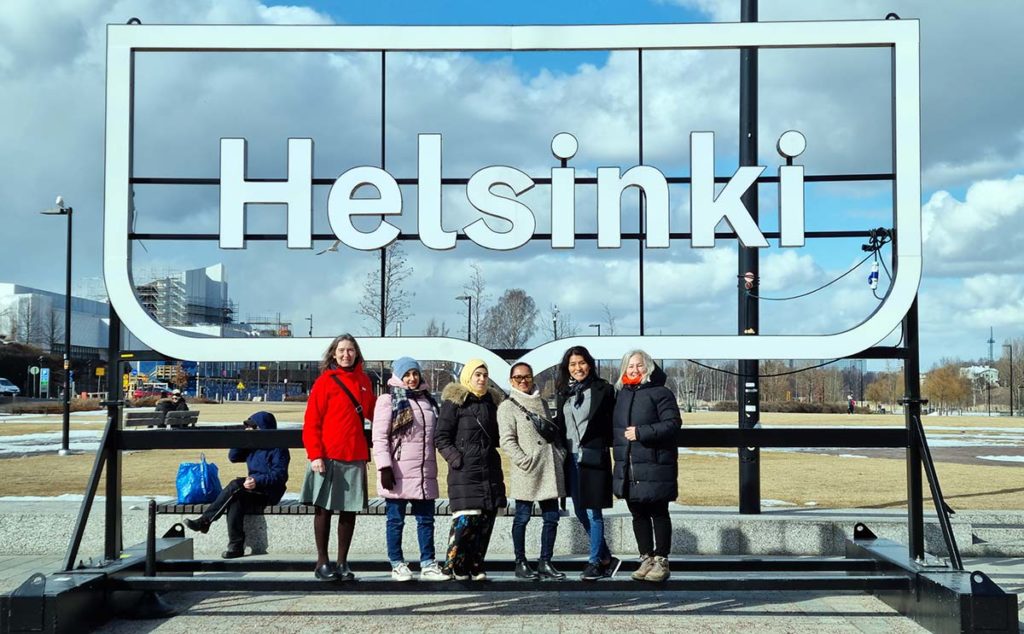
At one point there was an event in the city of Helsinki.
“Our students were able to talk about their situation, and some of the students were able to make small speeches to decision makers. That was powerful. The valuable lesson for our Finnish students was how easy they have it…! Some of our migrants have struggled a lot to get to where they are today,” says Hugh Fitzpatrick.
To travel is to be alive
All three of them explain that the students who get the opportunity to travel to another country see it as a gift and a great opportunity they otherwise would not have had. Evelyn Höglund says that a lot of her students have never been to another country – except for the countries they travelled through on their escape to the North.
”In the beginning of this project my students were mostly from hard dictatorships, and for them to understand the Nordic model and travel to another Nordic country was huge. It is an amazing opportunity for our students to actually meet other refugees who live in another Nordic country,” she explains.
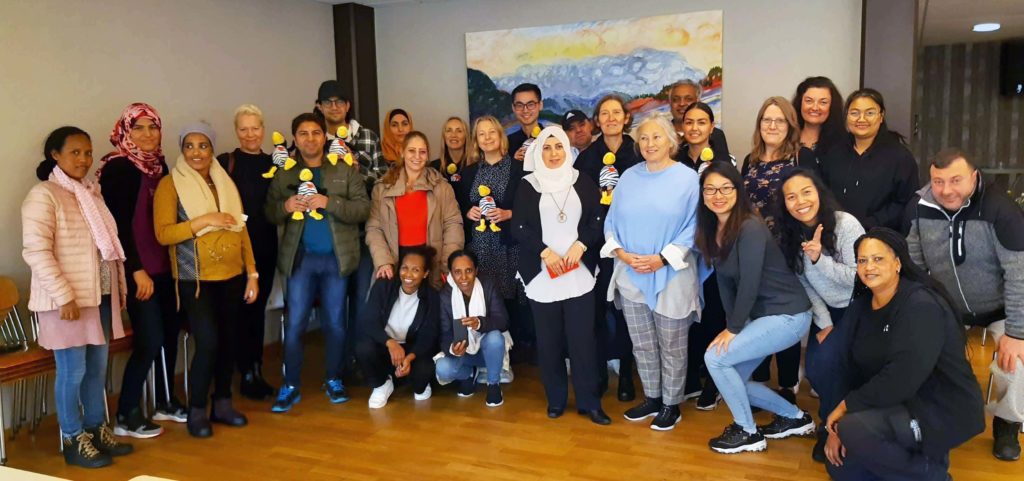
As a result, travelling and meeting with others internationally, as well as meeting with other refugees in other countries, is very meaningful.
“Part of the project is also to give the students an opportunity to think about other things and to help them see what kind of future could lie ahead. Not that their personal stories should disappear or be forgotten about – of course they are a part of them, too,” she says.
For Evelyn Höglund it is very important that the refugees see the new possibilities ahead of them.
“Now they live in a peaceful area, and they don’t have to talk only about the horrible things that have happened to them as refugees,” she says.
The project has given Evelyn Höglund a lot of personal joy.
“The project is inspiring to me personally, too – it is always so nice to meet my lovely colleagues from Finland, Denmark and Norway. There is so much energy in meeting people from other countries working in the same field as oneself,” she says.
More:
Website: my-nordic-identity.webnode.se
Article: Finbesök på SFI i Kramfors
Read the article in Nordic (Danish)
Coordination Institution
- HF & VUC Roskilde, Center For Adult Learning
Partner Institutions
- Centre for Adult Learning Kramfors, Sweden
- Eira High School for Adults, Finland
- Oslo Vo Rosenhof, Norway
Program
- Adult
